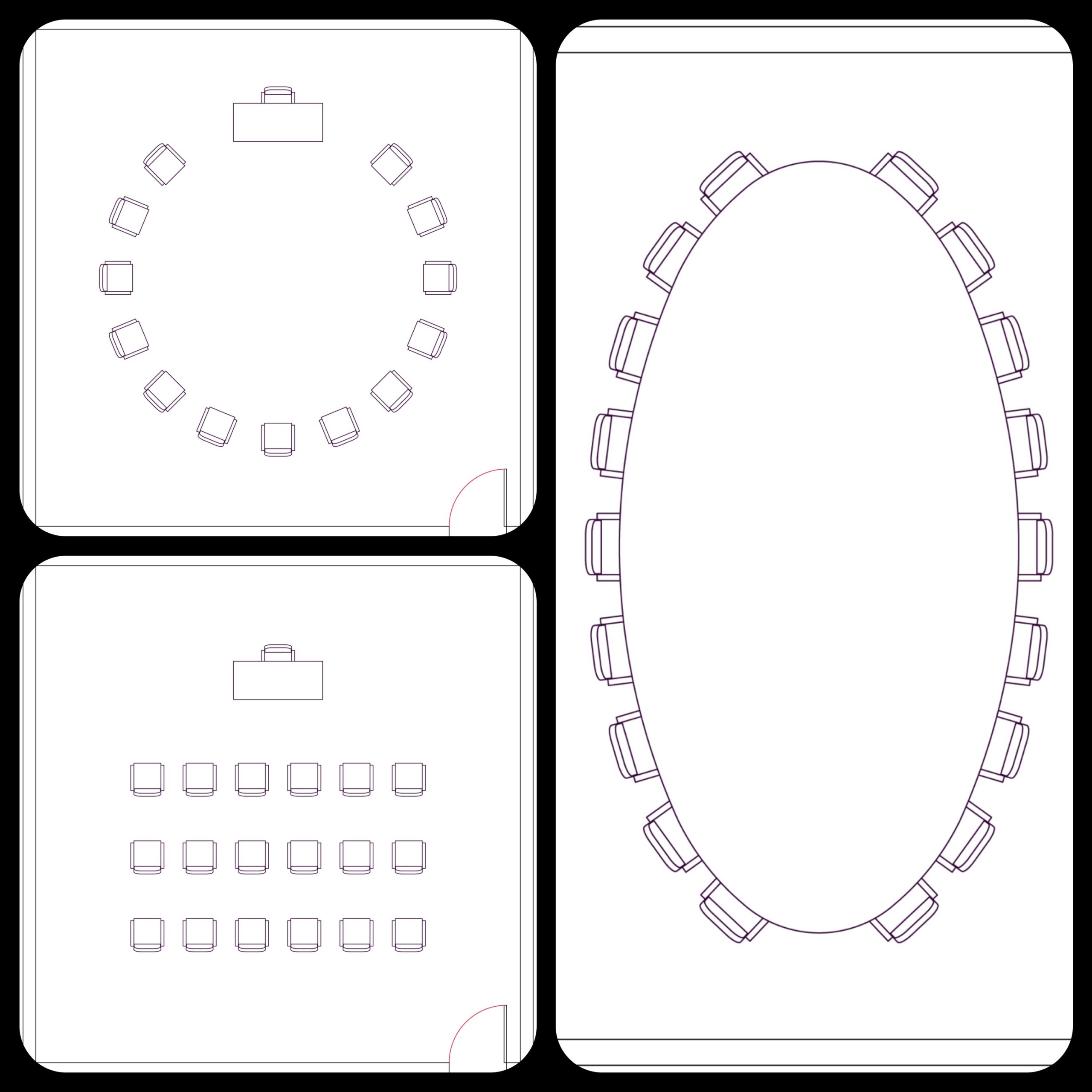Reading time: 4 min
di Marzia Mazzi
When I enter a company for the first time, I’m fascinated to see how the workspace reveals so much about the people who use it, telling us about the company spirit, the internal dynamics as well as the company’s view of their customers, and more besides. The organization of the workspace, on the one hand, lays bare any critical aspects while also expressing qualities and strengths.
There is a definite correlation between job quality and environment, and the more we want to convey our unique professionalism and the nature of our business, the more we have to analyse the kind of messages that, through the workspace, we are sending not only to our customers but also to our employees.
Meeting rooms
Let’s begin this journey by focusing on meeting rooms. Before you decide what workspace to choose (if there is more than one option) and how to set out the furniture available (seating, tables, screen video projection, etc.), there is a question you must ask: what is the objective of the meeting? What kind of atmosphere do we want to create?
Do you want an audience that listens without intervening, or do you want to involve your employees and get feedback?
If the meeting has been called to give directives and pass on information to your employees – i.e. “one-way” communication – it may be useful to set up the room with a video projector or whiteboard behind the speaker, and the participants’ chairs arranged in rows in front as though before a stage, a bit like the old classroom model. With this layout, you are creating a very clear dynamic: a leader who directs and a “public” that listens. Any exchange will be very limited; do you remember how you had to raise your hand to ask a question at school? Here you are re-creating the same atmosphere … if that’s what you’re looking for, then the arrangement is perfect!

But if the goal of your meeting is to share topics with your employees, to get ideas and feedback, provoke discussion and debate on a specific project, namely to create a participatory meeting, then you need to arrange the room to stimulate exchange and a circulation of ideas … in fact, a circle would be the ideal layout. A circle, semi-circle or oval are all forms that create a space enabling participants to look you in the eye; everyone is on the same hierarchical level; no one can be distracted and start checking text messages on their phone as each person is required to remain attentive and participate. This layout encourages maximum discussion, and will help build a lively debate. In this case, it’s highly unlikely that you’ll find yourself in front of a silent audience, while the stage set-up will probably create this effect.
In both cases, pay close attention to the where the leader is positioned.
Leader of the space
What would you think your boss was sitting with their back to the door when you enter a meeting room? Would that seem normal? Or rather, would you feel uncomfortable to see them in such an unusual position? In fact, any leader who occupies a “weaker” position – because it’s more exposed – will have great difficulty in leading a group, being recognized as the guide and maintaining authority and this will create a feeling of confusion and embarrassment among the employees.
Leader should always select a protected position, with their back to an area where people are not expected to pass, and facing the centre of the room from where, if possible, they can control the door where people enter.
Let’s consider for a moment what happens in the animal kingdom, among mammals, the species to which we belong. The pack leader always occupies the best position when the group stops to eat or sleep, for example. This does not indicate that the leader is a despot or a tyrant, but rather the pack recognizes that when an important decision must be made, the head needs to have control of the situation. This kind of instinctive process also occurs within a group of people: each individual must occupy the right position based on his/her role, even the right space! If we find ourselves working in the “wrong” place and fail to send a consistent message regarding our role, it is difficult for others to recognize it.
Some final tips: if you want to create a warm and comfortable environment that will stimulate lively but relaxed communication, pay attention to lighting and surface quality. Very bright lights bring to mind an interrogation room, while lighting that is too soft may make your audience sleepy; choose adjustable lighting with warm tones for your meeting.
It is better to select opaque surfaces for both the walls and flooring, and if there are many windows, put up curtains: reflective surfaces instinctively recall the feeling of the water and make us feel cold (in nature surfaces are shiny after storms). What do we instinctively do when we feel cold? We contract the muscles of our body, and close up. This is just the sort of situation you want to avoid in a meeting when you want your employees to be open and ready to dialogue!
So select the content of your meeting with care… but also the container!
P.S. Architect, lecturer and environmental consultant for companies and individuals, Marzia Mazzi has been operating in the field of internal design, investigating the underlying dynamics that affect us in spaces. You can contact the Marzia Mazzi by visiting her website www.spazioumano.com
| partem claram semper aspice |
The photos used - where not owned by the editorial team or our guests - are purchased on Adobe Stock and IStockPhoto or downloaded from platforms such as UnSplash or Pexels.
Did you like this post and want to learn more about the topics?
Passodue research on issues related to sales, marketing, ethics and the centrality of human beings within the market logic, officially started in 2012. The results derived from our work are described in the publications and in the books you can find in this section.







Comments (0)